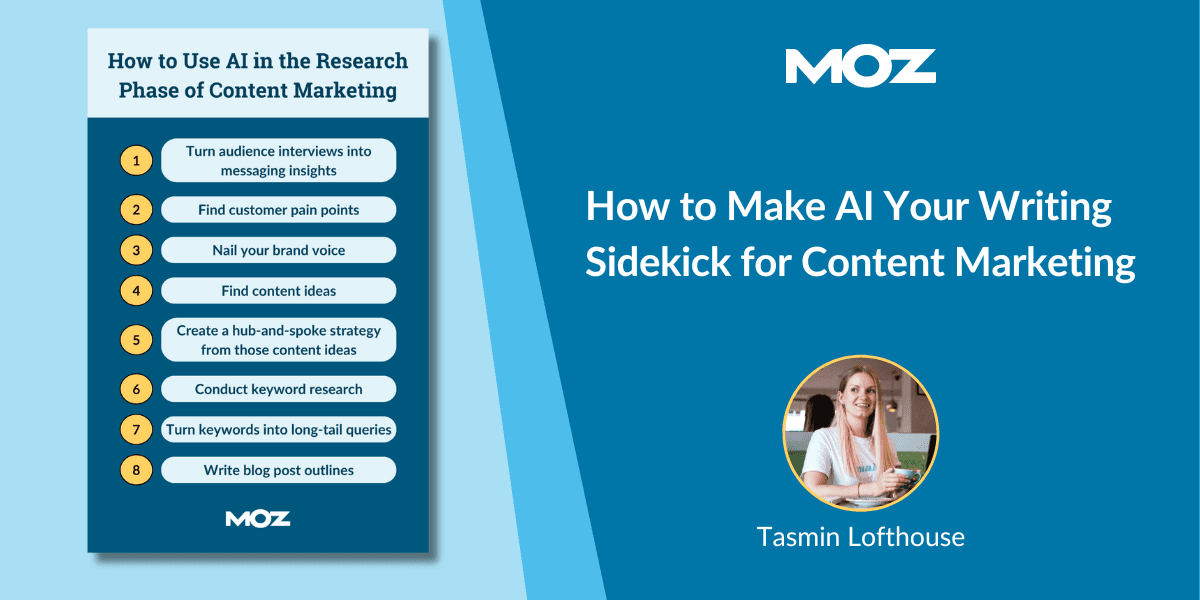AI opens up a universe of opportunities. As new AI tools emerge every day, so do new ways of using AI in your business and everyday life. You can use AI to do almost anything.
But that doesn’t mean AI will replace content marketers, SEOs, or writers — or, at least, won’t replace them yet.
AI has a lot of potential. But it also has limitations. Before using AI for content marketing, it’s helpful to get to grips with the constraints of AI.
It isn’t sentient
AI doesn’t have a brain like you or I do. It can’t think or feel.
AI’s knowledge is based solely on logic. In contrast, our knowledge is based on a mix of reason and emotion. Our experiences and feelings shape how we see things. But AI doesn’t have that ability.
AI might feign human emotion, but it’s merely an illusion. AI’s emotion is curated. AI can only perceive things based on the information it is fed.
You can’t rely on it to be accurate
Sure, AI is powerful. But it isn’t always accurate. Just like humans, AI sometimes gets things wrong.
When using ChatGPT, you will see a disclaimer stating, “ChatGPT may produce inaccurate information about people, places, or facts.” While AI tools do their best to provide factually accurate information, they still need a human touch.
If you’re using AI, fact-check the information it gives you. This is particularly important when writing YMYL (Your Money or Your Life) content that has real-world effects on the readers. In these cases, a human touch is crucial for ensuring E-E-A-T (Experience, Expertise, Authoritativeness, and Trustworthiness) runs through your content. AI cannot replicate this, running the risk of your content being inaccurate and low quality.
The output is limited by the input
Getting the best possible results from AI depends on feeding it the best possible information.
It’s like asking someone to design you a logo without giving them the exact details about what you want the logo to look like. They might get it right. But it is more likely that they will get it wrong — and you will end up in a back-and-forth ping-pong match of reiterating the design.
You need to tell AI exactly what you want. Otherwise, it’s going to hazard a guess (and likely get it wrong). Be specific in your request — like really specific. Want AI to give you ten content ideas for a blog post on programmatic SEO? Tell it! Want to make sure those results are all about the SaaS industry? Tell it! The more specific your generative AI prompt is, the better the output will be.
The responses can feel canned
You can get AI to write your landing pages, blog articles, and ad copy. But you might not want to.
Remember how I said AI isn’t sentient? And that the output is limited by the input? Well, both of those factors also contribute to the responses feeling somewhat meh.
AI responses can feel canned. They lack the originality and personality you get from a human writer who knows your brand inside and out.
With that said, you can train some AI tools, such as ChatGPT, to produce content that mirrors your brand’s voice, personality, and tone. You can do this by sharing examples of your writing style, providing background information on your company, and feeding it your tone of voice guidelines. But I’ll share more on that later in the article.
Another attribute that limits the creativity of AI outputs is that it doesn’t automatically consider the user journey stage, their current motivations or desires, or the exact words that drive action for them. AI doesn’t know your deeper brand origins or future goals — unless you train it on them.
All that adds up to creating generic content anyone could write. Use AI enough times, and you will notice familiar patterns in the responses. It sounds like AI.



